The art of writing
V. Covers
Due to the lack of durability of the materials, on which information was recorded, that is, parchment and paper (decidedly more brittle in comparison with stone or metal previously used), particular care was taken to safeguard the created manuscript.
It was stored, depending on its form, in tubes, cases, or boxes, and after books became more popular – it was additionally protected with a cover.
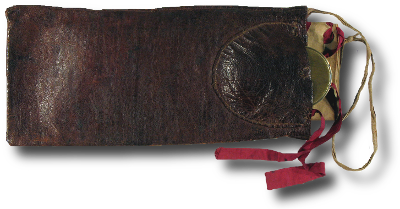

In Europe, in the early middle ages, valuable codices were given expensive covers. They were made from sheets of noble metals, gold or silver, or decorated with valuable plates, including ivory ones. Encrusted, glazed, with embedded precious and semi-precious gemstones, it represented an artful piece of jewellery. Such heavy covers, created using goldsmithing techniques, were a wonderful safeguard against the potential deformation of books.
Manuscripts which were less “ceremonial”, designed for use, were bound in leather, which in Poland was used for such purposes from the XV century. Together with the increased popularity of this type of binding, goldsmiths moved into the background, and the greatest area for presenting their skills was obtained by book-binders.
Book-binders (the main centre of book-binding was located until the XVII century in Krakow) dealt with connecting pages inside books as well as creating and decorating covers, in cooperation with goldsmiths and blacksmiths.
After sewing the pages into quires and connecting the quires (helpful here were catchwords and signature marks – special designations of the correct page and order of quires), books were created.

Quires were sewn together in a few places using threads. In the place of the stitches, in order to reinforce them and prevent the threads from cutting the quire, a leather strip or laces were added. When sewing the quires, the threads were wound around these strips/laces. In this way, the so-called raised bands, thicker parts of the spine, were formed. These were especially characteristic of medieval covers. They are visible on the cover spine – in the form of horizontal swellings in the place of the stitches of the quires.
In order to stiffen the manuscript, on the paper lining (front and back page of the covers) of such a created book, parchment, ordinary leather or fabric was glued.
Parchment used for covers often came from old books. The use of pages obtained from old manuscripts was widely practised, due to the cost of parchment (today, some historians are conducting research exclusively into such covers).


With larger, and therefore heavier manuscripts, linings were combined with boards (where the Polish saying of “to read a book from board to board” comes from), which was then covered with leather or fabric (e.g. velvet or satin), and later also with paper.
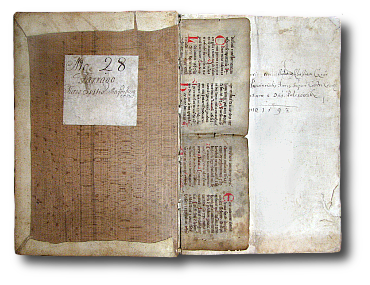

Leather (pig leather was mainly used for covers) was often decoratively engraved. For this purpose, book-binders used single stamps and presses (wooden and metal), and later also cylindrical presses thanks to which it was possible to press the same adornment quickly and seamlessly, e.g. in the form of a decorative strip. In order to engrave one decorative composition, a large press was used – a plaque, which when printed on a small cover represented a complete, “ready” decoration, and in larger covers could be one of the decorative elements.

The composition itself and the system of stamps depended on the invention of the book-binder.
Decorative borders, subtle motives, religious images, figures from mythology and allegorical ones, portraits of leaders and philosophers. Such covers are often small works of art, captivating with their wealth of decorative designs and the beauty of the ornaments. The book-binders who created them deserve the title of artist much more than the description of “craftsman”.




Covers were also pressed with gold, additionally enhancing the beauty of the decorations.
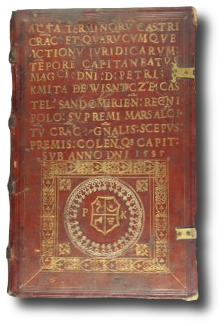
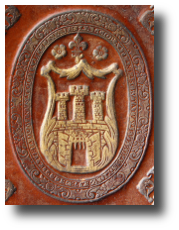

With the objective of protecting the decorations against rubbing, as well as protecting the books themselves against damage, metal elements were placed on the cover (in this area the book-binder cooperated closely with blacksmiths), such as corners, borders, strips, metal sheets, or other fittings.
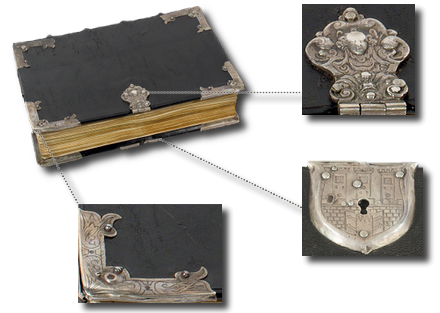
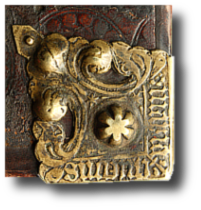

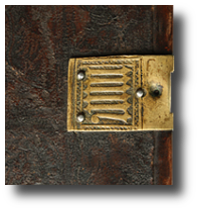
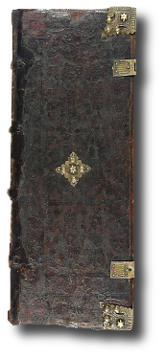
In order to prevent the deformation of books and cards, covers were also given metal buckles, often with leather straps.
Such fasteners eased the closing of the books and helped to maintain the block of the book in its original, non-deformed shape.
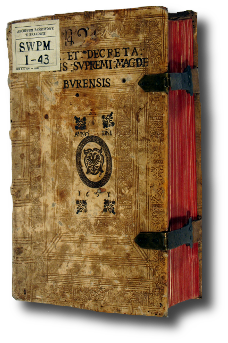

All of these metal elements of the covers, very often subtly engraved, with intricate shapes, apart from their usefulness, also had an additional function – they were beautiful decorations of the manuscript.
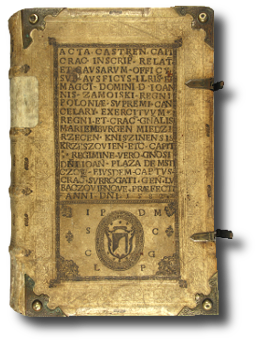

In later periods, it became popular to use covers in the so-called half-bound style – the spines and corners of books were leather, and covers were made of paper or linen and paper covers. Metal buckles fastening together books were replaced by string.
In special cases, in order to make the covers more beautiful, books were given to goldsmiths or enamellists, who complemented the covers with additional elements.
This custom also continued in later periods (XIX-XX centuries), when rich covers were given to important documents and books.
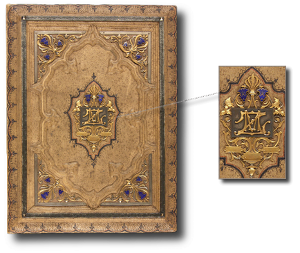
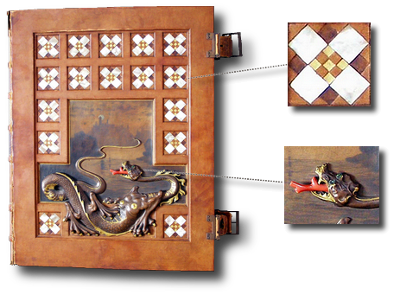
Â